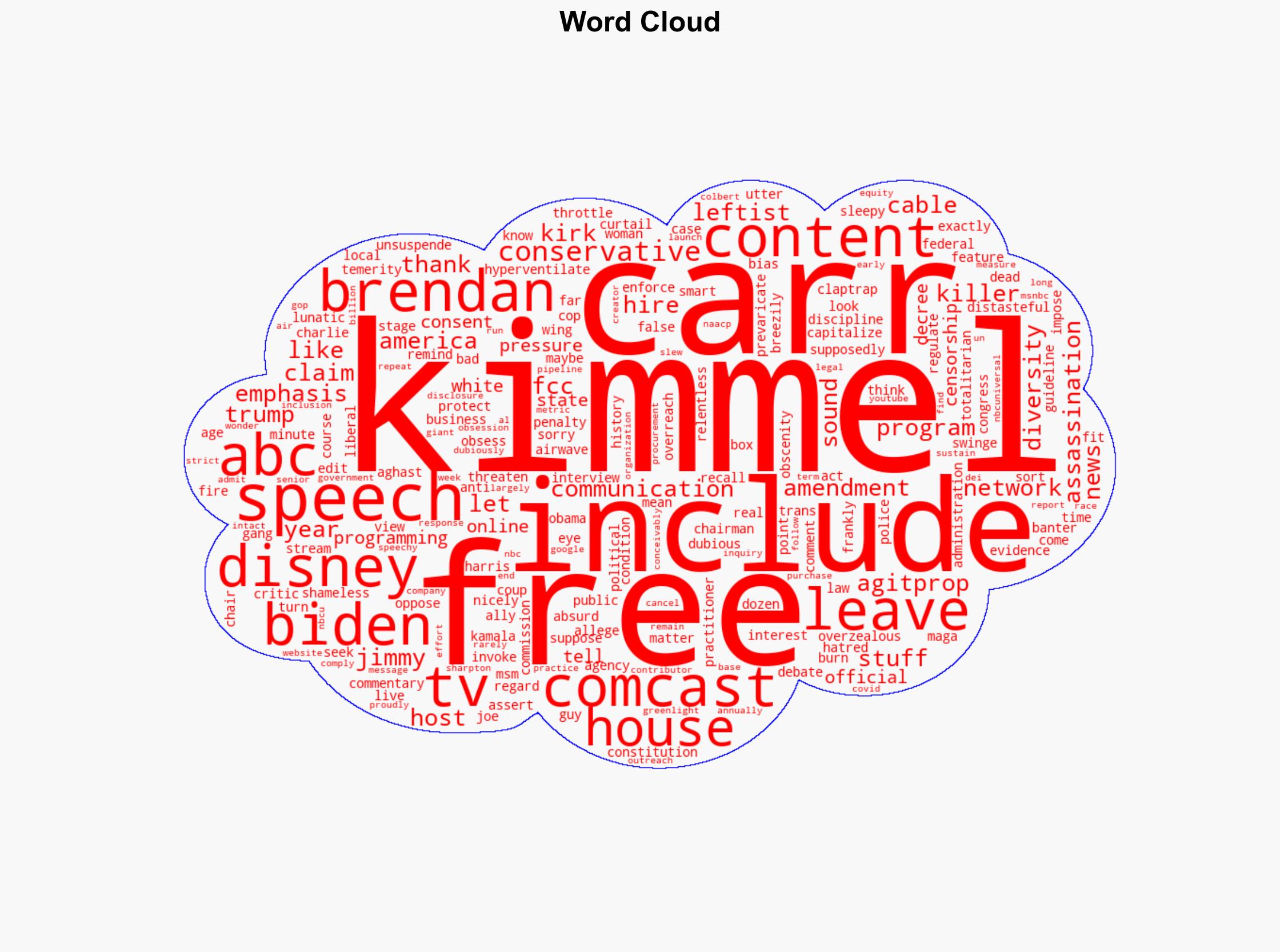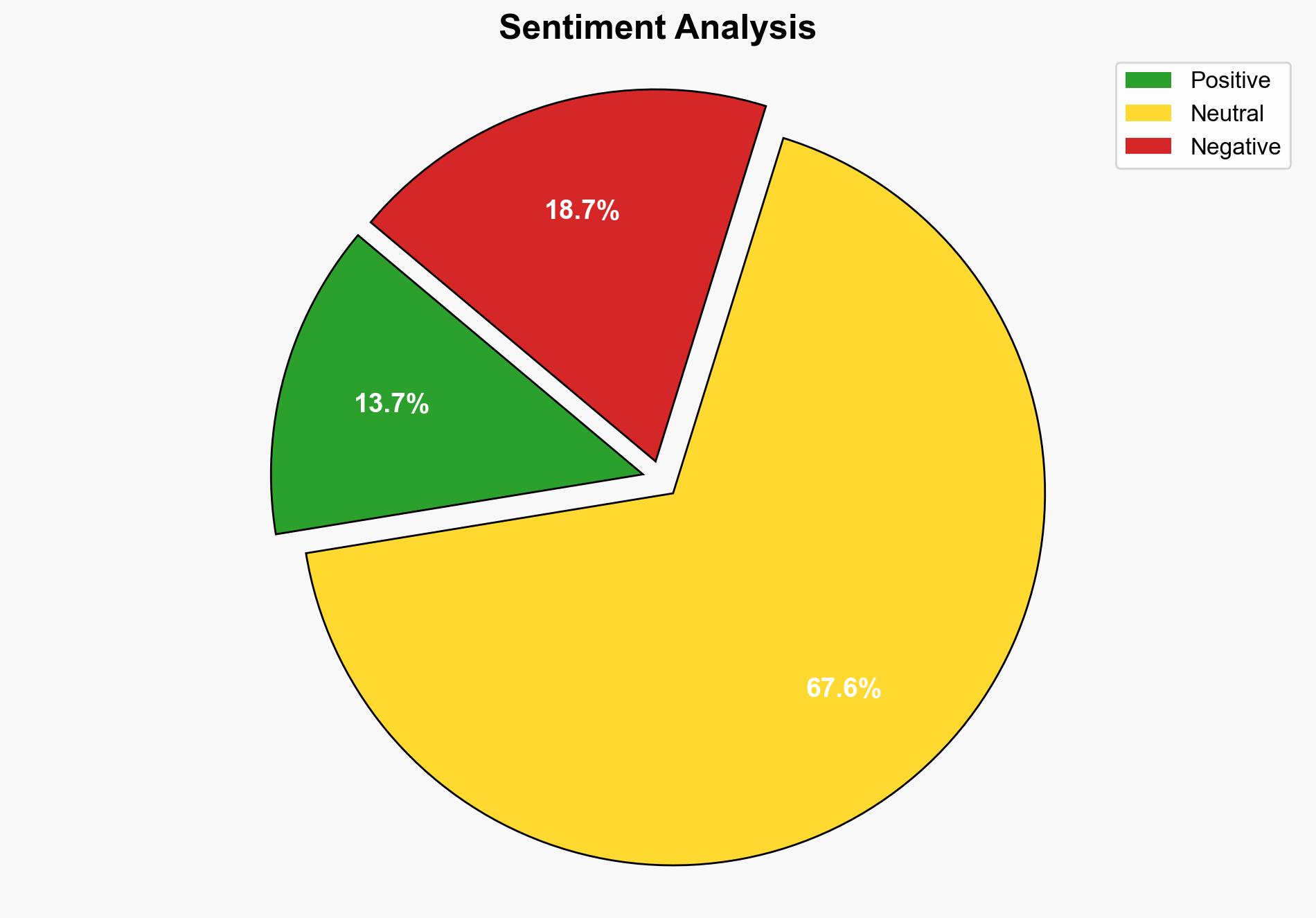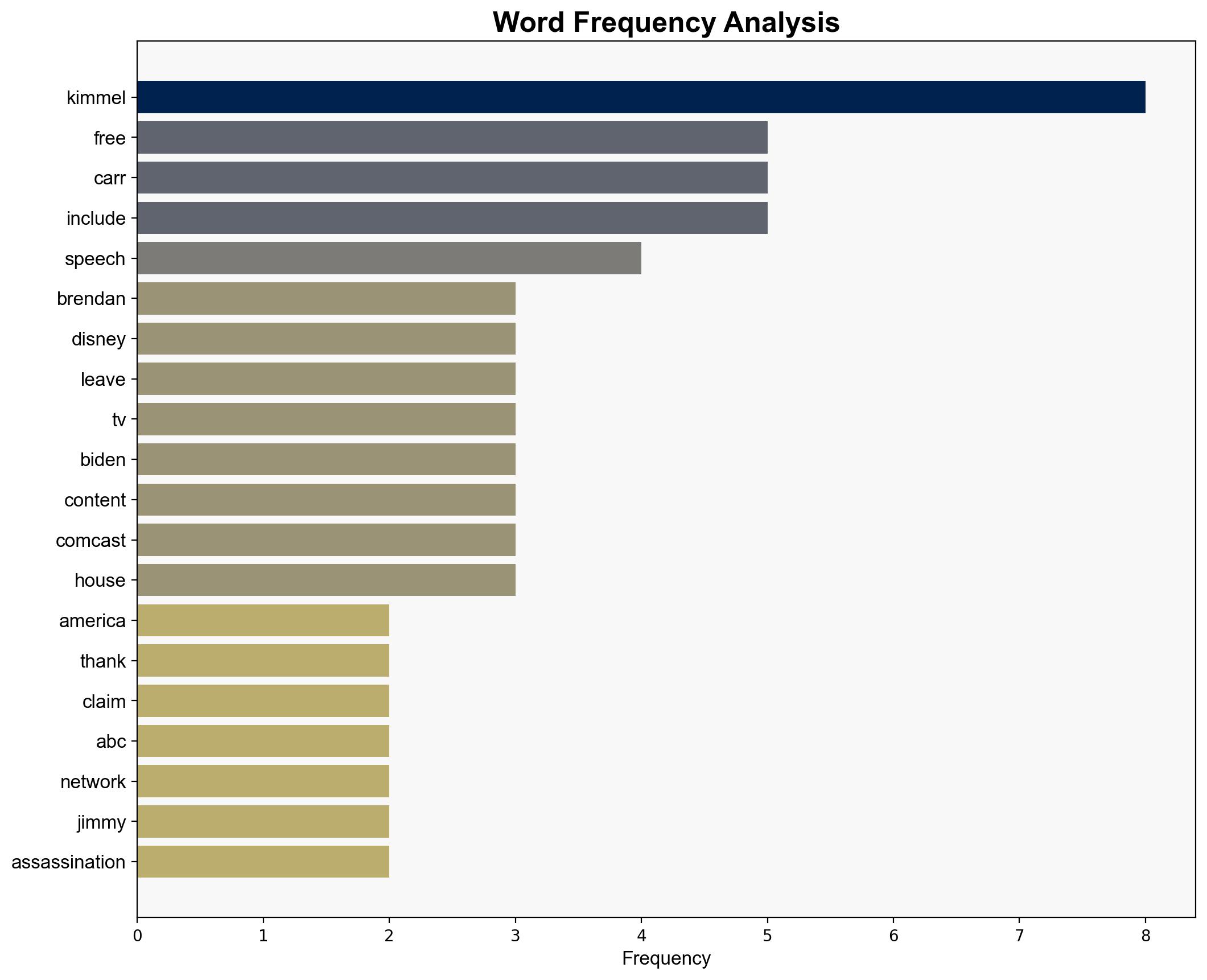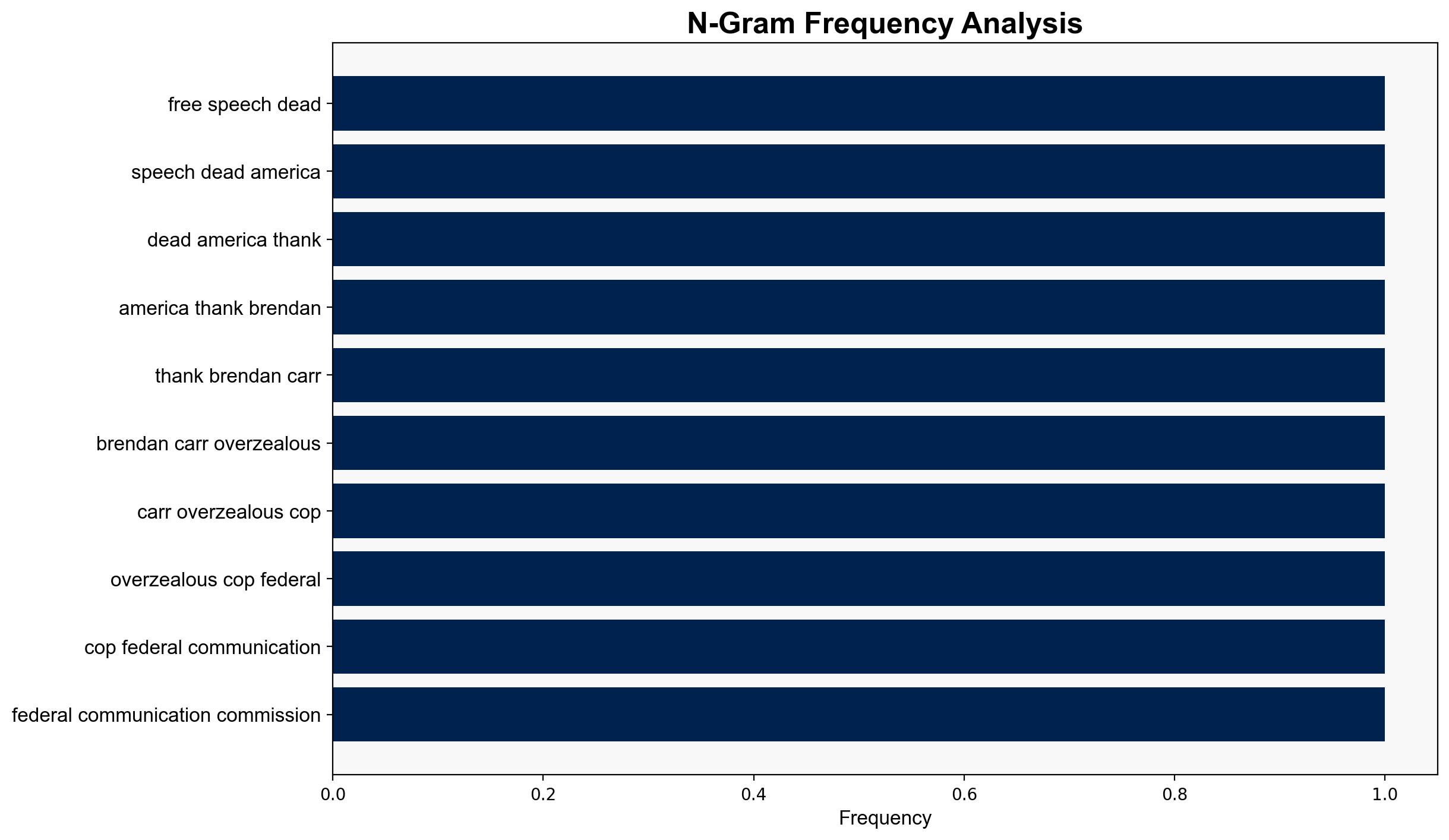No Trumps FCC is not going after free speech but the left has been stifling open debate for years – New York Post
Published on: 2025-09-28
Intelligence Report: No Trumps FCC is not going after free speech but the left has been stifling open debate for years – New York Post
1. BLUF (Bottom Line Up Front)
The analysis suggests that the narrative of the FCC under Brendan Carr not targeting free speech, while the left allegedly suppresses open debate, is complex and multifaceted. The hypothesis that the FCC’s actions are misinterpreted as free speech suppression is better supported. Confidence level: Moderate. Recommended action: Monitor FCC actions and media narratives for shifts in policy or rhetoric that may impact public perception and regulatory practices.
2. Competing Hypotheses
1. **Hypothesis A**: The FCC, under Brendan Carr, is not targeting free speech but is enforcing existing regulations, while the left has been actively stifling open debate through media and corporate influence.
2. **Hypothesis B**: The FCC’s actions are perceived as an overreach into free speech, and claims of the left suppressing debate are exaggerated or misrepresented.
Using ACH 2.0, Hypothesis A is better supported by the evidence of historical regulatory actions and media narratives, while Hypothesis B lacks substantial evidence of direct FCC suppression.
3. Key Assumptions and Red Flags
– **Assumptions**: Hypothesis A assumes that existing regulations are applied consistently and that media influence is a significant factor in shaping public discourse.
– **Red Flags**: The potential bias in media reporting and the lack of direct evidence linking FCC actions to free speech suppression.
– **Blind Spots**: The influence of political affiliations on media narratives and potential underreporting of conservative viewpoints.
4. Implications and Strategic Risks
– **Patterns**: Increasing polarization in media narratives could exacerbate public distrust in regulatory bodies.
– **Cascading Threats**: Potential for regulatory changes impacting media operations and public discourse.
– **Economic and Cyber Dimensions**: Media companies may face economic pressures and cybersecurity threats as they navigate regulatory landscapes.
– **Geopolitical and Psychological Dimensions**: The perception of regulatory bias could influence international perceptions of U.S. media freedom.
5. Recommendations and Outlook
- Monitor FCC policy changes and public statements for shifts in regulatory focus.
- Engage with media outlets to encourage balanced reporting and transparency.
- Scenario Projections:
- Best: Balanced regulatory enforcement enhances public trust.
- Worst: Perceived bias leads to increased polarization and regulatory backlash.
- Most Likely: Continued debate over media influence and regulatory actions.
6. Key Individuals and Entities
– Brendan Carr
– Jimmy Kimmel
– Charlie Kirk
– Kamala Harris
– Joe Biden
– Comcast
– NBCUniversal
– Disney
– ABC Network
7. Thematic Tags
national security threats, media influence, regulatory practices, political polarization





